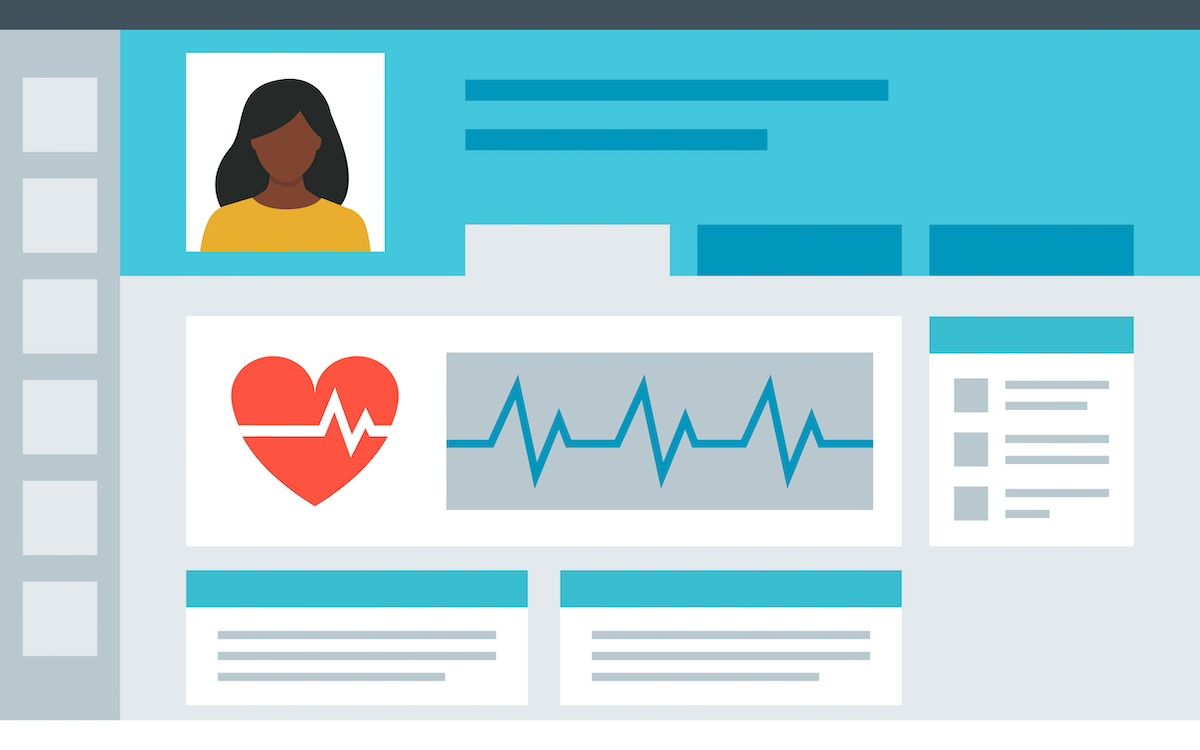- Center on Health Equity & Access
- Clinical
- Health Care Cost
- Health Care Delivery
- Insurance
- Policy
- Technology
- Value-Based Care
Same Hypertension, Different Levels of Portal Engagement, Disparities Research Shows
When patients are treated in primary care for high blood pressure, sociodemographic factors sway the rates at which they access patient portals, investigators found. This could influence their hypertension outcomes.
Among individuals with hypertension treated in primary care, those who are Black or Hispanic, who are uninsured, whose preferred language is not English, and who smoke are less likely to engage with patient portals, according to results of a retrospective cohort study involving more than 360,000 patients.
These clear sociodemographic disparities in portal engagement will likely exacerbate outcomes disparities if special efforts to engage these patients with portals aren’t taken, authors emphasized in JAMA Network Open.1 More bluntly, “disadvantaged patient groups are being left behind,” as health care systems have begun to employ patient portals more frequently for hypertension-related interventions and programs, as well as for patient-clinician communication.
Sociodemographics may be at play when considering the different rates wi which patient groups access portals for their hypertension care | Image Credit: elenabsl-stock.adobe.com

The team focused on electronic health records of a large, diverse Midwestern health care system, which included 366, 871 patients with hypertension who had a primary care visit between January 1, 2021, and December 31, 2021. Their mean age was 63.5 years, 52.8% were female patients, and 66.9% were non-Hispanic White. Further, among the patients, 19.7% were non-Hispanic Black, 7.8% were Hispanic, 3.4% were Asian, and 2.3% were of another race or ethnicity.
Reviewing all patients’ usage over 1 year (starting with their first 2021 visit), more than two-thirds (70.5%) accessed the patient portal at least once; the median number of annual logins was 28. About 60% accessed the portal within 7 days of at least 50% of their primary care provider (PCP) visits, 35.7% accessed the portal frequently (28 or more times), 28.9% engaged in messaging (2 or more messaging exchanges vs less than 2), and 8.7% shared home blood pressure readings, the authors noted.
Compared with White patients, non-Hispanic Black and Hispanic patients had lower odds of accessing the portal at all (Black: OR, 0.53; Hispanic: OR, 0.66), access around PCP visit time (Black: OR, 0.49; Hispanic: OR, 0.62), frequent access (Black: OR, 0.56; Hispanic: OR, 0.71), and messaging (Black: OR, 0.63; Hispanic: OR, 0.71).
Further, all 4593 patients in the self-pay insurance category accessed the patient portal at least once, but compared with patients with commercial insurance, they had lower odds of access around PCP visit time, frequent access, and messaging (ORs, 0.44, 0.50, and 0.57, respectively). The researchers observed similar trends among Medicare and Medicaid patients compared with commercially insured patients.
Patients whose primary language is not English also had lower odds of any access, access around PCP visit time, frequent access, and messaging (ORs, 0.40, 0.35, 0.37, and 0.40, respectively) compared with patients whose preferred language is English; the same was true of tobacco users compared with non–tobacco users (ORs, 0.50, 0.50, 0.58, and 0.55, respectively).
New details, old story. Although the research team noted that delving into the reasons behind this particular digital divide was beyond the scope of their study, they posited that those reasons might well include education levels, low socioeconomic status, and lack of internet access.2,3
The study results showed that “more PCP visits were associated with greater patient portal engagement, [suggesting] that patients engaged with the patient portals are more engaged with their PCPs and have more in-clinic communication.” The authors declared that clinicians should therefore make the effort to engage patients who have less than the guideline-recommended number of PCP visits—say, 3 or fewer visits per year—with the patient portal as an alternative, or backup, to in-person communications with the PCP.
Additional research, they emphasized, should seek to understand specifically how patient portal engagement could be associated with reaching blood pressure control. Crucially, it should incorporate implementation science approaches, directly addressing how physicians and staff play key roles in promoting more equitable patient portal use.
References
1. Khatib R, Glowacki N, Chang E, Lauffenburger J, Pletcher MJ, Siddiqi A. Disparities in patient portal engagement among patients with hypertension treated in primary care. JAMA Netw Open. 2024;7(5):e2411649. doi:10.1001/jamanetworkopen.2024.11649
2. Carini E, Villani L, Pezzullo AM, et al. The impact of digital patient portals on health outcomes, system efficiency, and patient attitudes: updated systematic literature review. J Med Internet Res. 2021;23(9):e26189. doi:10.2196/26189
3. Aljabri D, Dumitrascu A, Burton MC, et al. Patient portal adoption and use by hospitalized cancer patients: a retrospective study of its impact on adverse events, utilization, and patient satisfaction. BMC Med Inform Decis Mak. 2018;18(1):70. doi:10.1186/s12911-018-0644-4
